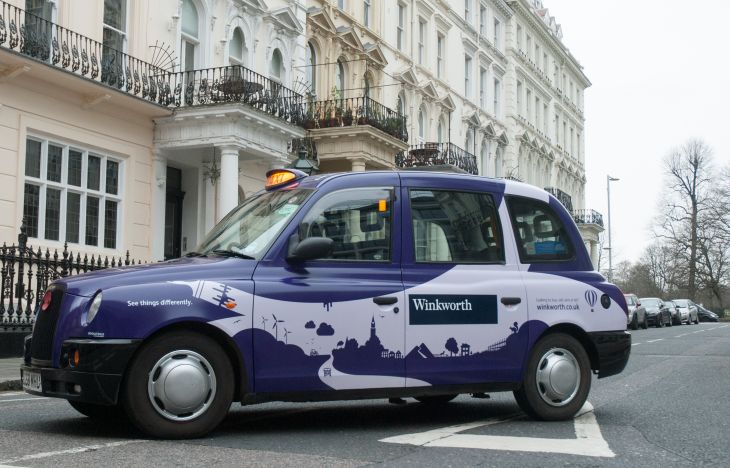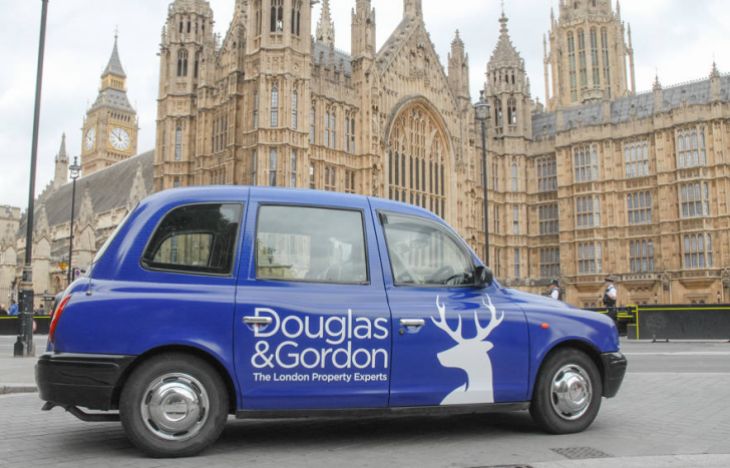Property Clients Turning Heads With Taxi Advertising
Published 09 March 2017
In recent years we have seen taxi advertising rise in popularity as a format via which property and real estate businesses choose to reach a city centre audience in the mind-set to buy or sell a property. Taxis are a unique outdoor advertising format; always on the move, reaching new people every day in busy city centres as well as in residential streets where there is simply no other outdoor media.
Their ubiquity within busy cities delivers broad audience reach amongst the most economically active people. Ubiquitous is the only taxi advertising company that operates across 26 UK cities, however we understand that every city is different, and although populations vary, advertising on black taxis still delivers excellent reach of those who tend to be the chief income earner. Using taxi advertising to place your brand in front of this audience creates awareness amongst a time-poor, upwardly mobile audience on the move.
Taxi advertising in London has the potential to reach 85% of ABC1 adults every two weeks, which delivers great potential for brands. Those who see taxi advertising in London are 52% more likely than the average person to buy or sell a property in the next year; they are 61% more likely to use their mobile phone to look up property information. To reach people who are frequently outside and on the move, what better advertising opportunity than black taxis?
International Estate and Letting agents Winkworth have teamed up with Ubiquitous to create a number of eye-catching taxi campaigns in London. A well-known brand already, Winkworth use taxi advertising to maintain brand presence across the city centre, to ensure that their brand is front of mind when potential customers are thinking about property decisions, whether they are buying, selling, renting or investing. Inside their taxis, the internal tip-seat posters communicated a deeper message with passengers throughout the journey, prompting visits to the brand’s website via mobile QR codes.
The picture is similar across the UK’s major cities – taxi advertising continues to reach those people who are most economically active. By infiltrating city centre streets, taxi advertising not only reaches those who live in our major conurbations, but also ensures that a brand’s message reaches the many thousands, if not millions of people who visit those cities each month, from neighbouring cities and the rest of the UK. Different opportunities exist outside London, for example, those who live or work in Edinburgh, Liverpool, Manchester, Glasgow or Birmingham (and see taxi advertising) are three times more likely than the GB average to have paid off their mortgage and are 60% more likely to look for profitable ways to invest – great potential here for property businesses, as taxi advertising reaches this audience with ease. The taxi audience in these cities is also twice as likely to move in with a partner, within the next year.
Specialist property investment consultancy Knight Knox, created a campaign which ran across two major UK cities and called for UK investors to buy property in Manchester. They used a great creative and compelling copy to inform their target audience that Manchester is ‘the UK’s buy-to-let hotspot’. Inside the taxis, tip-seats provided further detail about investing in Manchester property, along with NFC stickers that directed passengers to access the Knight Knox website via their smartphone. This campaign effectively enabled Knight Knox to reach their target audience and build their brand in these two key cities.
Our property clients look to taxi advertising to help them achieve a variety of communication objectives - to promote a new development or investment opportunity, to simply build brand awareness and maintain market presence, or to launch a new brand proposition. Whether you book SuperSide or Livery taxis across the short or long term, taxi advertising continually places your brand in the environment where your target audience works, socialises and shops.
Sources: TGI 2017 Q1, ROUTE 21.01


